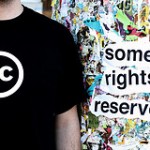Regardless of your opinions about copyright laws and the fair use of digital media, only media that is clearly licensed for reuse is permitted in SCIE 300. What does that mean? It means that any music, sound effects, images, or film clips used in your assignments can not be copyrighted materials. For example, the image used in the header of this blog has a Creative Commons license and the source of the image is cited.
To help you navigate through this, there is a page on the UBC Wiki called Free Stuff that summarizes where you can find suitable materials. For example, it’s possible to do flickr and Google searches such that only images licensed for reuse are returned. Just use the advanced search for both of these (in Google you may have to expand the menu to see the usage rights options). The Free Music Archive, as the name suggests, is filled with music that you are free to download and reuse as long as you give credit to the creator. There is also a collection of creative commons sound effects, which is also a really hilarious way to waste time.
There are a few different types of Creative Commons licenses. The safest thing to do is always provide the source of the content either as the name of the creator or as a link to the original. If you are ever unsure about whether something is free for reuse or not, and a contact email is provided, you can simply send the creator a message asking them if it’s OK to use their stuff. Most of the time, especially for non-commercial uses, it will be OK and they will thank you for asking.
It might seem like this makes finding materials for your assignments more complicated. It doesn’t. The resources we have summarized here plus the wealth of information available online about Creative Commons, should help you. Keep in mind that this can also be to your advantage. If you post photos or videos online, consider learning about your licensing options.


